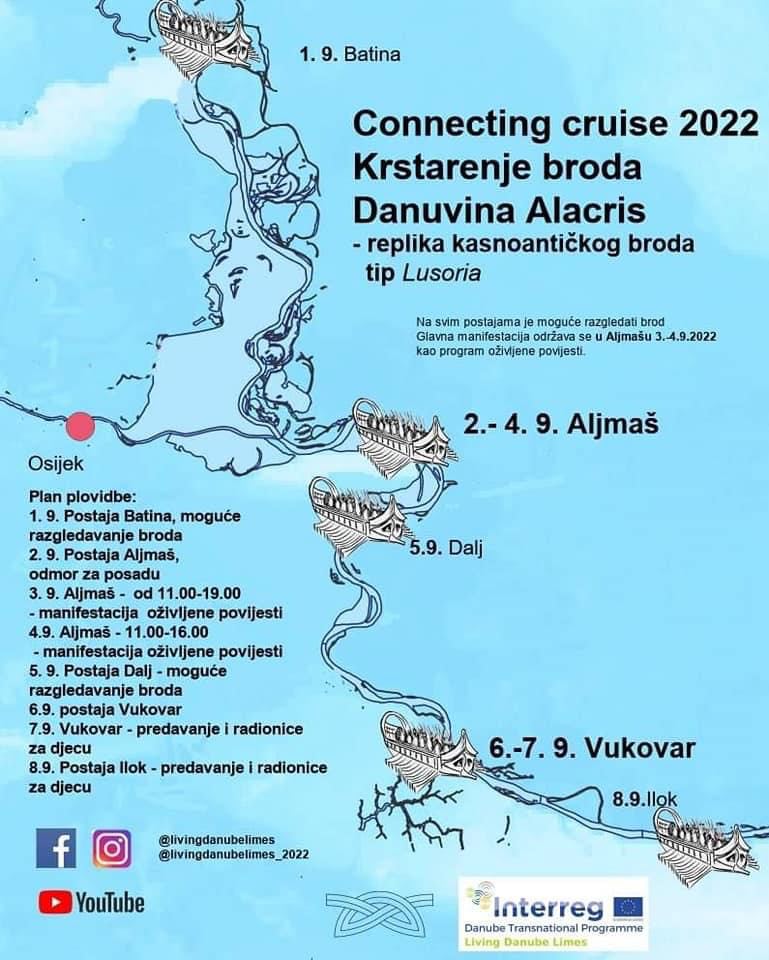2000 Years Old Roman Ship Discovered off the Coast of Sukosan near Zadar
November 5, 2022 - For more than two thousand years, at a depth of two meters, covered in sand, a Roman ship lay untouched in the sea near Sukosan.
Zadarski reports that although it has long been speculated that the seabed of the ancient harbor at the Barbir site has been hiding many riches, the Zadar river archeologists only recently, after six years of systematic research, came to a great discovery: a Roman ship from the 1st century emerged from under the layers of sand! It is about three meters wide, while nine meters of its length have been discovered so far. Apart from the parts that were eaten by shipworm, the rest of the ship is in incredibly good condition thanks to the fact that the wood itself has been preserved in the sand for two millennia.
"The ancient port of Barbir was discovered in 1973 and for a long time was documented only superficially, thanks to the research of Boris Ilakovec. Only in 2017 did new, more serious work begin in that area, in parallel with the research of the Roman villa on the mainland, which was largely destroyed due to modern construction. Fortunately, part of the site under the sea has been well preserved", reveals Mladen Pešić, the leader of this research and the director of the International Centre for Underwater Archaeology. In the last six years, for as long as the research under the sea has lasted, the centre has cooperated with the German Archaeological Institute, but also with other partners such as Oxford, the University of Zadar, the Archaeological Museum...
First, they investigated the structure of the Roman pier, which was built in two phases. The first one dates from the 1st century AD when the port was smaller. This is evidenced by numerous finds of ceramic vessels and amphorae, oil lamps and fragments of glass that came to Sukosan from different parts of the Mediterranean - from the area of present-day Greece, Turkey, the Middle East and Italy - on the routes of maritime trade links. A major expansion took place in the middle of the 4th century, when the present-day shape of the tongue was formed, which is still there, despite the long exposure to the sea. Evidence of intensive trade during that time is also shown by finds from North Africa. Among the finds from that period, thirty bronze coins stand out, minted during the reign of the emperors Constantine II, Constans and Constantius II, which were found in a layer 150 centimeters below the level of the present-day seabed. It was during these investigations that the archaeologists found a piece of wood, a board with a metal nail, which particularly intrigued them the year before last.
"We were hoping that there could be a ship next to that board. That's why last year we opened the first four squares, each with an area of four square metres, and started researching at that location. And indeed, there was a Roman ship there that we dated to the end of the 1st or the very beginning of the 2nd century, i.e. following to the first phase of the port. This year, the research continued, again in cooperation with the German Archaeological Institute and the University of Zadar and archeology students. The team was not large, but it was very interesting" Pešić said for Zadarski.
For more, make sure to check out our dedicated Lifestyle section.
Interreg Connecting Cruise 2022: Replica of Roman Ship Sails into Vukovar
September 5, 2022 – Even though the summer is not yet completely gone, and many tourists are still spending their days at the beautiful beaches of the Adriatic Sea, September is a special month all around Croatia. In Vukovar, a replica of a Roman ship sails in on Tuesday the 6th of September to tell stories of the Roman times.
With events popping up left and right, celebrating wine, movement, food, art, and a lot more, you will find something to do wherever you go. Among them, the coast of the Danube and Vukovar shine yet again to show that eastern Slavonia is, in fact, full of life 365 days a year.

Interreg: The ship's route and programme
As part of the international Interreg project Living Danube Limes, on Tuesday, September 6, 2022, a replica of a Roman ship from the 4th century will sail into Vukovar. The ship started its journey on the Danube Limes on July 15, 2022, in Germany, and after having sailed through Austria, Slovakia and Hungary, it arrived in Croatia. The crew, made up of international volunteers, has sailed to Batina, Aljmaš, and Dalj in Croatia on the way to Vukovar, and after a two-day stay in Vukovar, the ship will continue its journey towards Ilok and further down the Danube to the Black Sea. The Croatian partner of the project is the Institute of Archaeology, which, together with the City Museum of Vukovar and the Vučedol Culture Museum, participated in the organisation of this event in Vukovar.

Vukovar Municipal Museum: The programme in Vukovar - the arrival of the ship on Tuesday, educational workshops, lectures, and a pub quiz on Wednesday
On this occasion, the Vukovar Municipal Museum prepared various content for all ages, from workshops for children and adults, and lectures on the topic of making a ship replica to a museum pub quiz. It should be pointed out that the replica of the ship will be available for viewing by all interested visitors on both days. They invite all citizens to join in and experience the atmosphere of the Roman era in the 21st century.
For more, make sure to check out our dedicated Lifestyle section.


